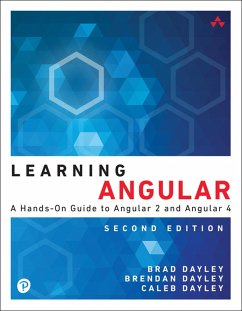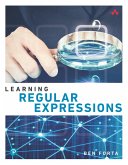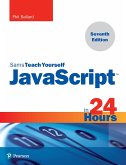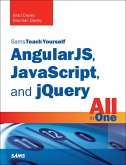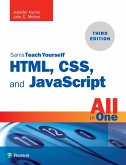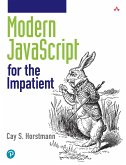Learning Angular, Second Edition
A Hands-On Guide to Angular 2 and Angular 4
Learning Angular teaches modern application development with Angular 2 and Angular 4. It begins with the basics of Angular and the technologies and techniques used throughout the book, such as key features of TypeScript, newer ES6 syntax and concepts, and details about the tools needed to write professional Angular applications.
The reader will next build an Angular application from scratch while learning about the primary pieces of an Angular application and see how they work together. Using lots of examples, the core parts of Angular will be introduced, such as Components, the Router, and Services.
The book also covers techniques like server-side rendering and how to incrementally add Angular 2+ features to existing AngularJS applications. Finally, the reader will gain insight into advanced skills that should be part of any professional Angular developer's toolkit such as testing, tooling options, and performance tuning.
Contents at a Glance
Introduction
A Hands-On Guide to Angular 2 and Angular 4
Learning Angular teaches modern application development with Angular 2 and Angular 4. It begins with the basics of Angular and the technologies and techniques used throughout the book, such as key features of TypeScript, newer ES6 syntax and concepts, and details about the tools needed to write professional Angular applications.
The reader will next build an Angular application from scratch while learning about the primary pieces of an Angular application and see how they work together. Using lots of examples, the core parts of Angular will be introduced, such as Components, the Router, and Services.
The book also covers techniques like server-side rendering and how to incrementally add Angular 2+ features to existing AngularJS applications. Finally, the reader will gain insight into advanced skills that should be part of any professional Angular developer's toolkit such as testing, tooling options, and performance tuning.
- Understand how Angular is organized and learn best practices for designing Angular applications
- Quickly build Angular templates with built-in directives that enhance the user experience
- Bind UI elements to your data model, so changes to your model and UI occur automatically in tandem
- Define custom Angular directives that extend HTML
- Implement zoomable images, expandable lists, and other rich UI components
- Implement client-side services that interact with web servers
- Build dynamic browser views to provide even richer user interaction
- Create custom services you can easily reuse
- Implement rich UI components as custom Angular directives
Contents at a Glance
Introduction
- What is Angular
- Why Use Angular
- Who this Book is For
- How to Use this Book
- Getting the Source Code
- Setting Up a JavaScript Development Environment
- Defining Variables
- Understanding JavaScript Data Types
- Using Operators
- Implementing Looping
- Creating Functions
- Understanding Variable Scope
- Using JavaScript Objects
- Manipulating Strings
- Working with Arrays
- Adding Error Handling
- Learning the Different Types
- Understanding Interfaces
- Implementing Classes
- Implementing Modules
- Understanding Functions
- Why Angular?
- Understanding Angular
- Separation of Responsibilities
- Adding Angular to Your Environment
- Using the Angular CLI
- Creating a Basic Angular Application
- Component Configuration
- Building the Template
- Using Constructors
- Using External Templates
- Implementing Directives
- Using Expressions
- Using Pipes
- Building a Custom Pipe
- Understanding Data Binding
- Interpolation
- Property Binding
- Attribute Binding
- Class Binding
- Style Binding
- Event Binding
- Two-Way Binding
- Understanding Directives
- Using Built-in Directives
- Structural Directives
- Attribute Directives
- Creating a Custom Attribute Directive
- Creating a Custom Directive with a Component
- Using Browser Events
- Emitting Custom Events
- Using Observables
- Understanding Angular Services
- Using the Built in Services
- Sending HTTP GET and PUT Requests with the http Service
- Implementing a Simple Mock Server Using the http Service
- Changing Views with the router Service
- Implementing a Router with a Navigation Bar
- Implementing a Router with Parameters
- Integrating Custom Services into Angular Applications
- Implementing a Simple Application That Uses a Constant Data Service
- Implementing a Data Transform Service
- Implementing a Variable Data Service
- Implementing a Service that Returns a Promise
- Implementing a Shared Service
- Implementing an Angular Application That Uses the Animation Service
- Implementing an Angular Application That Zooms in on Images
- Implementing an Angular Application That Enables Drag and Drop
- Implementing a Star Rating Angular Component
Chapter 1: Jumping into JavaScript
Chapter 2: Jumping into TypeScript
Chapter 3: Getting Started with Angular
Chapter 4: Angular Components
Chapter 5: Expressions
Chapter 6: Data Binding
Chapter 7: Built-in Directives
Chapter 8: Custom Directives
Chapter 9: Events and Change Detection
Chapter 10: Implementing Angular Services in Web Applications
Chapter 11: Creating Your Own Custom Angular Service
Chapter 12: Having Fun with Angular
Dieser Download kann aus rechtlichen Gründen nur mit Rechnungsadresse in A, B, BG, CY, CZ, D, DK, EW, E, FIN, F, GR, HR, H, IRL, I, LT, L, LR, M, NL, PL, P, R, S, SLO, SK ausgeliefert werden.

